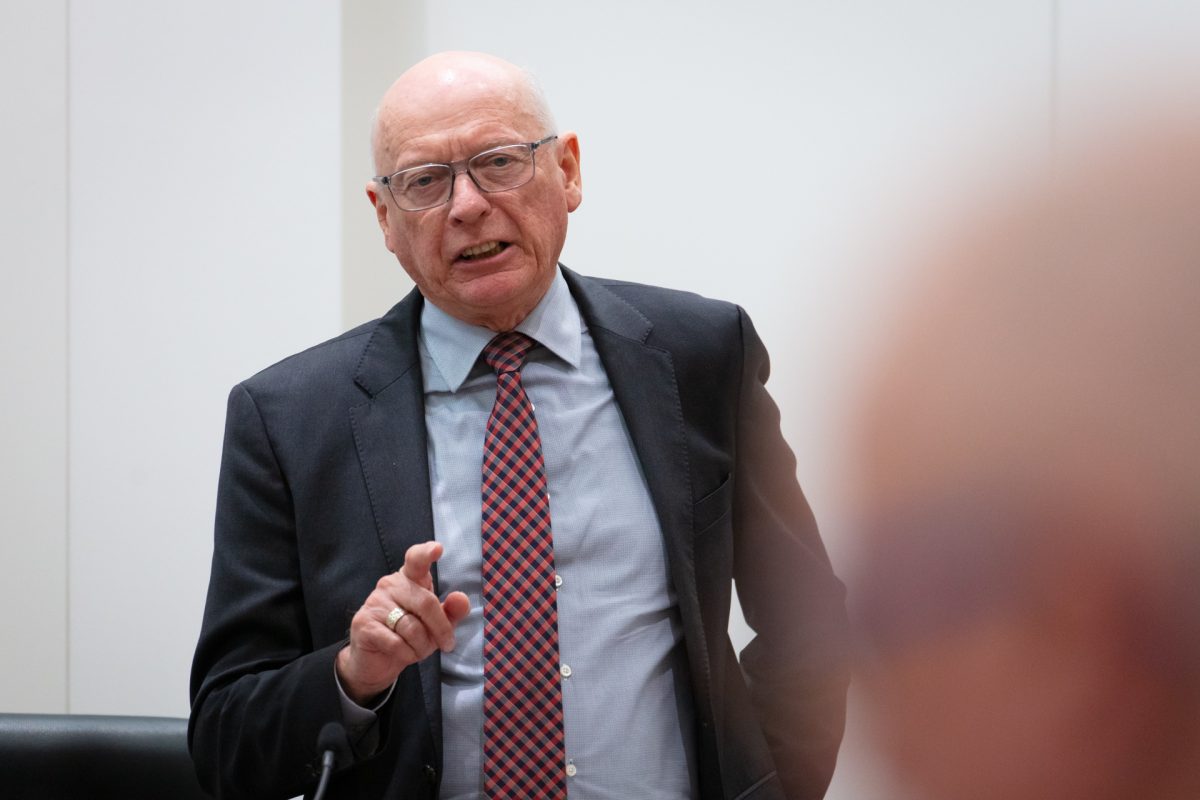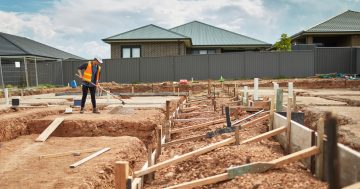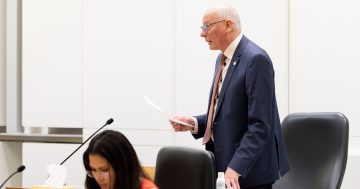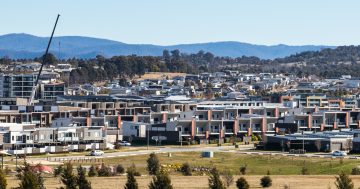
“For younger Canberrans, the dreams of purchasing a home have never been less achievable,” Peter Cain told the Assembly. Photo: Thomas Lucraft.
A motion to urgently increase the ACT’s supply and diversity of housing was voted down in the Assembly, with Labor and the Greens arguing that demand is being adequately met and that we should instead focus on building within the existing urban footprint.
Shadow Minister for Planning and Land Management Peter Cain moved the motion on Thursday (2 November) calling on the ACT Government to commit to investigating new sites for development and set ambitious and realistic targets for land release.
Mr Cain argued that the decline in homeownership was largely due to a lack of housing supply.
“The main driver of the overwhelming lack of affordability and choice we are experiencing in the ACT housing market is lack of supply,” he said.
“For younger Canberrans, the dreams of purchasing a home have never been less achievable.
“Our housing market is in a crisis and residents of the ACT are the worst affected across the nation.”
Mr Cain said the current Indicative Land Release Program (ILRP) for 2023-24 commits to the release of 1883 new residential dwellings, but the rate of population growth projected by the ACT Budget suggests Canberra’s population will grow by about 9000 people a year.
Mr Cain also accused the Labor-Greens Government of “deliberately gouging prospective buyers” in a cost-of-living crisis by overvaluing land to make a profit.
“The Chief Minister and Planning Minister are treating the release of land as a means to raise revenue,” he said.
Planning Minister Mick Gentleman denied these claims and said it would be “completely improper” for the government to raise revenue by selling land.
“We have a lawful obligation to sell land at its value,” he said.
“[Mr Cain] said the government is land-banking to make a profit … we don’t make profits in government.”
Minister Gentleman said Mr Cain was wrong to suggest there was a large amount of land in the ACT waiting to be built on.
“While some might see a lot of undeveloped land as they drive around Canberra and consider that this must mean there is an abundance of greenfield land available, it’s simply not the case,” he said.
“A lot of the land that is not developed has environmental values or other attributes that might make it unsuitable for development.”
Mr Gentleman noted the ACT Government was focused on providing at least 70 per cent of its new housing within the existing urban footprint, with the support of the private sector.
“Mr Cain’s motion ignores the fact that the private sector will continue to advance the supply of new dwellings across the ACT, a large proportion of these dwellings are multi-unit properties located within the existing urban footprint,” he said.
He said privately owned land contributes around 1000 to 1500 new dwellings per year to the existing housing stock, in addition to the dwellings set out in the ILRP.
“This means private landowners and the development industry, who hold a lot of the land within the existing urban footprint, will also be contributing to delivering more housing.”
Mr Gentleman said he believed demand was being met.
“With respect to meeting demand, I believe we’re seeing what is on the ILRP combined with the private sector delivery is meeting demand and choice and providing a range of housing typologies in a range of locations,” he said.
ACT Greens planning spokesperson Jo Clay acknowledged that Canberra needs to grow, but that this needs to be within the existing boundaries rather than building further and further outside the city.
“Cities need to grow, we need more density,” she said.
“We think it’s time that Canberra just draws city limits, this is what most mature cities have done. We’ll have to do it sooner or later. It is time to do it now.”
She said the Liberals’ urban sprawl approach created aworse outcomes for people and for the planet.
“We do hear a really strong push from our colleagues in the Canberra Liberals that this is the only way Canberra can develop. I’m really really sorry that they cannot see another path forward, we certainly can in the Greens.
“We need to make better use of our existing resources and the infrastructure that we have, and we need to make sure that it is affordable and available to everyone.”





















